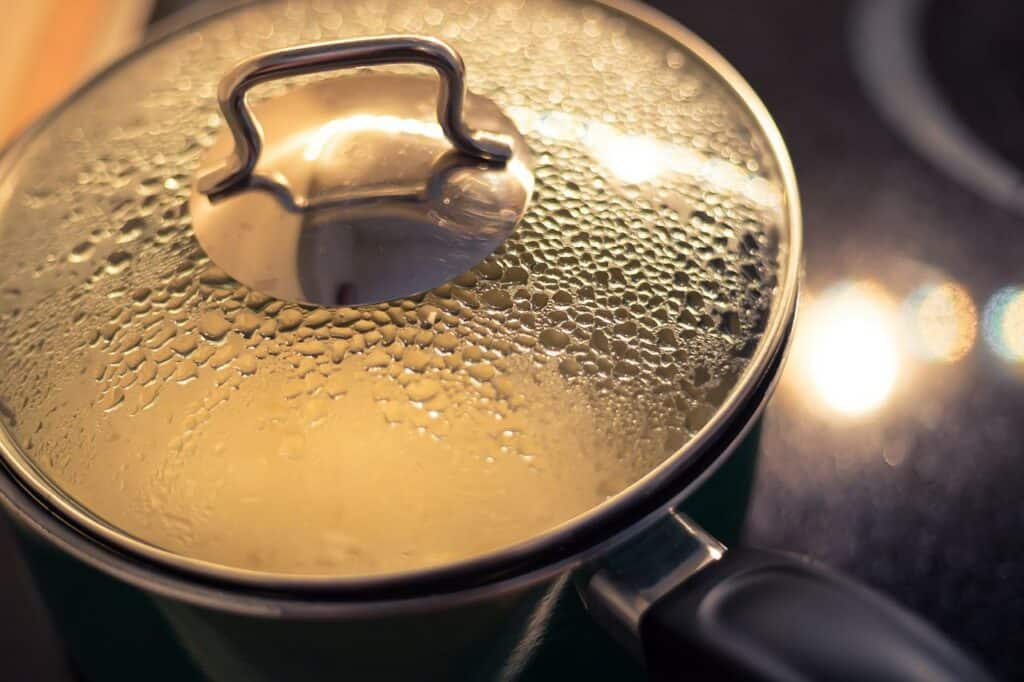Continuous changes are occurring in our surroundings at every moment. Some changes are at a molecular level and therefore are not visible. However, every change in aspects such as color, smell, and even taste constitutes a physical or chemical change.
Boiling is an action that involves heating a liquid to the point it starts bubbling and slowly vaporizes. When water is heated, its temperature increases gradually. When the temperatures are 212 degrees Fahrenheit, the water turns to vapor and evaporates in the air.
Chemical changes result in the formation of new products that have a different chemical composition from the initial one. In physical changes, the chemical composition of the resultant product does not change – it is the same product; only that it is in another form.
In the case of boiling water, the vapor formed is still water but in a gaseous form. If the steam is condensed, we will recover the initial water. Therefore, boiling water is a physical change because the molecular characteristics remain the same even during vaporization.

Is Boiling Water A Chemical Change
It is essential to understand what happens when we put water to a boil. In the boiling process, heat must be provided to trigger and maintain the progression. The temperatures rise gradually as the water absorbs more heat.
The heat increases the kinetic energy of the water particles. An increase in kinetic energy causes the molecules to move faster and collide with each other in a randomized motion. When the temperature reaches 100 degrees Celsius, the boiling point of water is reached.
In this state, the water starts to bubble, and vapor can be observed escaping into the air. At this moment, the molecules have detached and can no longer remain in the liquid state.
Since the vapor is less dense than the surrounding air, it raises and can be observed and felt as it evaporates. If the heating element is not turned off, all the water will vaporize into the surroundings.
Essentially, all the water will change from the initial liquid state to a gaseous state. The physical change is a result of the heat provided during the boiling process.
Note that during the boiling process, there is no change in the transition temperatures. During this transition, the heat provides the required energy for vaporization, and that is why there are no changes in temperature at that moment.
There is no chemical reaction taking place when we boil water. Notice that there is only vapor formed, which can be converted back to liquid water by a simple process of condensation.
For instance, when you heat water in a pot, you will notice condensed water on the inside of the lid after the heat is removed.
The water particles are condensed water vapor to form liquid water. Therefore, we can conclude that boiling water involves no chemical change. The water only changes from one form to another. In this case, from liquid to vapor.
Is Boiling Water An Endothermic Or Exothermic Change
In chemistry, reactions are categorized in terms of the nature of the heat involved. Some reactions absorb heat from the surroundings, while others release heat into the environment.
Therefore, any reaction or change observed in your home can be classified based on this analogy. There are two types of classification: endothermic and exothermic reactions.
In a simple definition, an endothermic change results in heat being absorbed by the system. On the other hand, exothermic reactions end up releasing heat energy into the environment.
Boiling water involves a change from liquid to vapor. For the boiling process to be achieved, heat is supplied to the water.
At room temperature, the water is in a stable state and cannot change unless heat is provided. The heat provided increases the movement of water molecules from one point to another.
Heat triggers the potential energy in the water molecules into kinetic energy. As more heat is supplied, the temperatures increase until the water starts to bubble.
Since the water is provided to the system, boiling water constitutes an endothermic reaction. The heat applied breaks down the bonds holding the water molecules together.
These molecules collide and move further from each other. When the molecules are completely broken, the liquid water on boil turns to a vapor.
When the water changes from liquid to vapor, heat is required for this phase change. There is a change in the energy during heating, but the water does not change its chemical composition.
To gain a deeper insight about changes caused by boiling water, watch the video below:
Is Freezing Water A Chemical Change
During a chemical reaction, the molecular components of a product are changed. Therefore, a chemical change results in forming different substances that have other molecular properties.
Usually, atoms react based on their molecular characteristics to create products with different chemical compositions.
Freezing is a physical change that occurs when liquid water is subjected to temperatures below zero degrees Celsius. The liquid slowly transforms its physical nature to form a solid structure.
Essentially, cold temperatures cause the molecules to slow their movement and come closer to each other. It is the reason the particles in ice are compacted together.
It can be observed that although there is a phase change from liquid to solid, the chemical properties of water are not altered during freezing.
When heat is applied to ice, the solid ice melts quickly to form water. The heat causes the kinetic energy in the water molecule to rise, breaking the compacted molecules.
During the melting process, the molecules collide and move further from each other. After a period, the ice will be liquid water. Therefore, freezing does not involve any chemical changes since liquid water can be recovered from ice.
Chemical changes are not easily reversible due to the complexity of the associated products. It will require you to set up a chemical system to reverse a chemical change.
Conversely, physical changes such as boiling or freezing water can be reversed to liquid water by condensing or heating, respectively.
Is Frying An Egg A Chemical Change
Cooking an egg involves heating which transforms it into a completely different product. It may look the same, but its chemical characteristics are different from a raw egg.
A rise in temperature from the pan or microwave breaks down the molecules to form a different product.
It is a permanent change since the chemical properties of the yolk are changed. The egg yolk is composed of proteins. When heat is applied, the proteins are denatured, and their properties are permanently altered.
Mostly, temperatures above 40 degrees denature the structural and chemical composition of most proteins.
The cooked egg changes and can be observed by how it looks. The yolk hardens depending on the period of cooking. Also, the liquid turns into a solid structure. The changes cannot be reversed, and the cooked egg does not have the same molecular attributes as those of a raw egg.
On the other hand, breaking an egg in a pot can be considered a physical change. All the chemical components at this point have not been altered. However, once put in the frying pan, the chemical properties are changed.
Final Thoughts
Overall, both boiling and freezing involve a phase change which is a physical reaction. In both cases, the final product has the same chemical characteristics as liquid water. The processes are easily reversible since there is no chemical change.
Boiling is an endothermic reaction since heat is supplied from the environment to the system. The heat is used to break the molecules to facilitate boiling. Conversely, freezing is exothermic since heat is lost to the surrounding.





